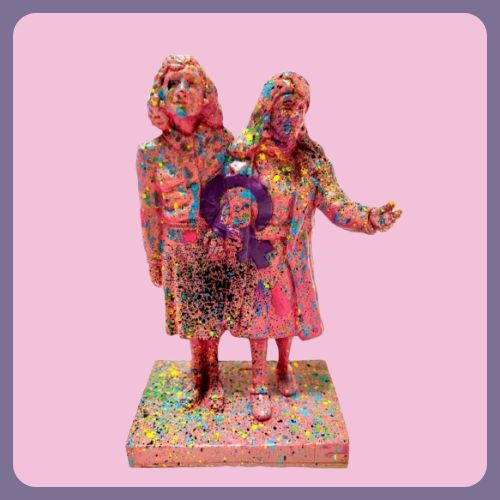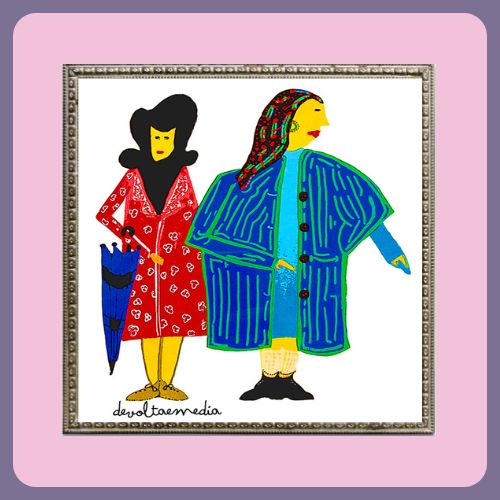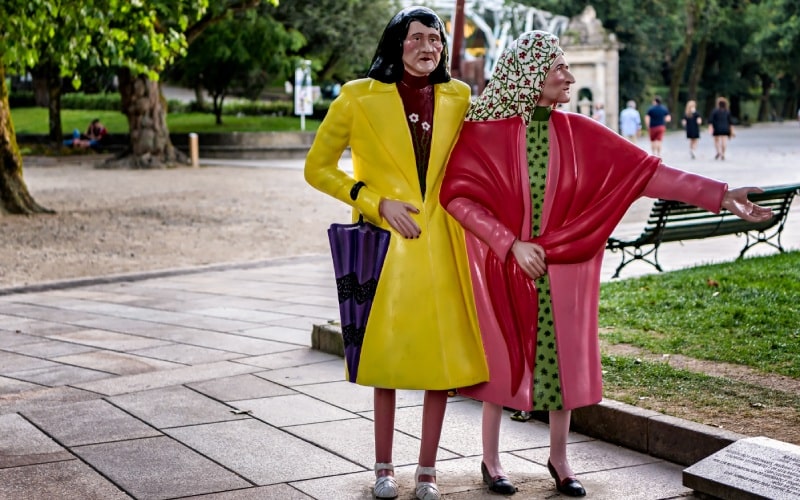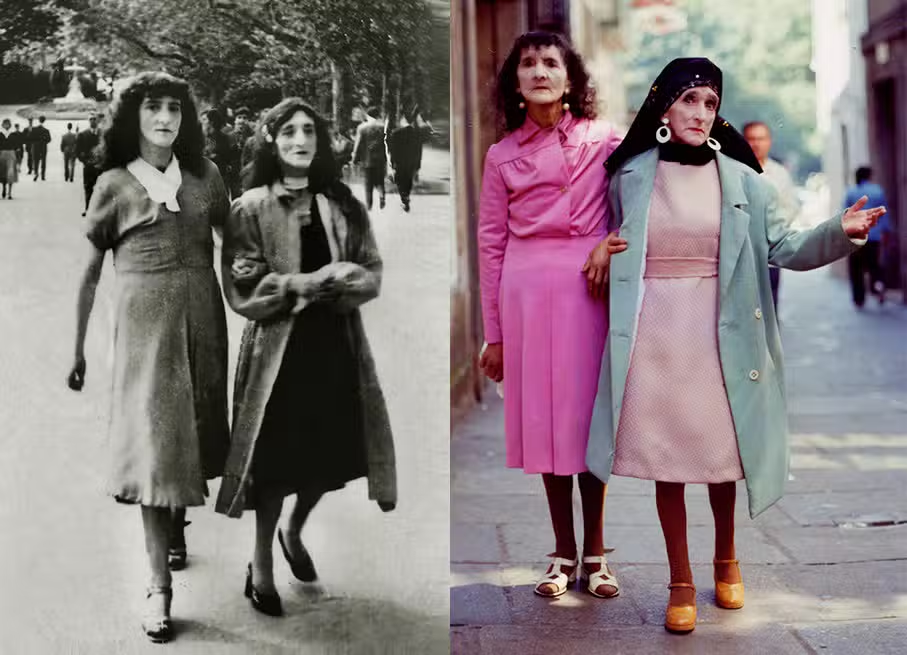For this International Women’s Day, I wanted to celebrate design, resilience and women’s strength. Las Dos Marías from Santiago de Compostela. Their vibrant personalities and remarkable resilience are truly inspiring. While you might not find many design pieces directly inspired by them, their colorful outfits alone would bring a burst of life to any space. This post isn’t all about design; it’s more about sharing something close to my heart, from where I live, that I think deserves a bit more recognition.

Table of Contents
The Two Marias: Women’s Strength
Maruxa and Coralia Fandiño Ricart, known as As Dúas Marías or As Dúas en Punto, were iconic sisters from Santiago de Compostela and are a testament to women’s strength. Born into a large working-class family, they grew up in the 1930s during a time of social change. Their father, Arturo, was a shoemaker, and their mother, Consuelo, ran a sewing workshop. The inseparable sisters worked alongside their mother in the workshop, leading simple lives in Santiago’s old town.

However, their lives took a dramatic turn with the outbreak of the Spanish Civil War and the rise of Francoism. The Fandiño family, known for their left-wing beliefs, became targets of the regime. Three of their brothers, Manolo, Alfonso, and Antonio, were particularly targeted due to their involvement with the anarchist CNT (Confederación Nacional del Trabajo). Antonio was captured and imprisoned for twenty years, while Manolo remained in hiding, and Alfonso escaped to exile.

Resilience and Strength
As the regime’s persecution escalated, the sisters refused to betray their brothers’ whereabouts. This led to years of brutal abuse and humiliation, including public torture and the destruction of their home. Their family business also suffered, as clients feared retaliation from the authorities. Despite this, their neighbors and local businesses quietly supported them, providing food and helping them survive the harsh years of Francoist repression.

Maruxa passed away in 1980 at the age of 82, and Coralia, after moving to A Coruña, died in 1983 at 68. The sisters were initially buried in separate graves at the Boisaca cemetery, but in 2014, thanks to a popular initiative led by the Ateneo de Santiago, their graves were restored, and they were reburied together with a commemorative plaque.

Design
To honor their legacy, resilience and strength, a sculpture of the sisters was created by Basque sculptor César Lombera in 1994 and placed in Alameda Park. The polychrome sculpture depicts Maruxa winking and chatting while holding her sister’s arm, with Coralia holding an umbrella. Inspired by a photograph in Viajar magazine, the sculpture has become one of Santiago de Compostela’s most cherished symbols, representing the sisters’ resilience and their colorful refuge from the trauma of Francoist repression.

The Fandiño sisters would stroll through the streets of Santiago de Compostela, dressed in their homemade clothes made from vibrant, colorful fabrics—an act of rebellion in a time when conformity was expected. Their bold use of color was a reflection of their spirited, lively personalities, women’s strength and their resistance to the repression they faced. It’s a powerful reminder of how color can impact not only our personal expression but also the way we challenge the world around us. How we choose to use color can deeply influence our lives, our spaces, and our sense of freedom.

